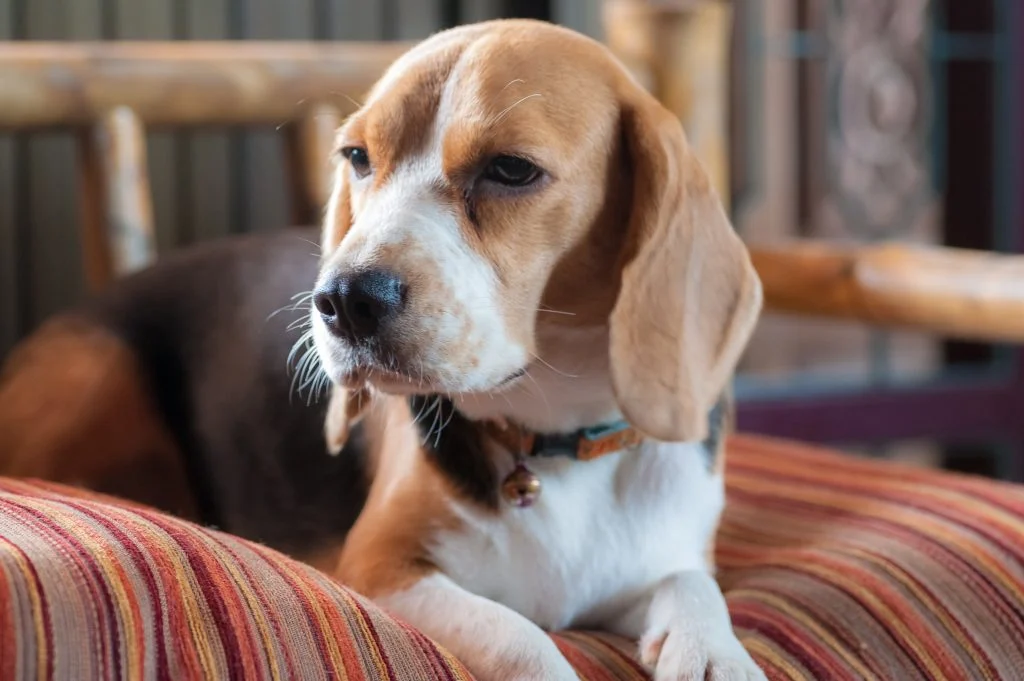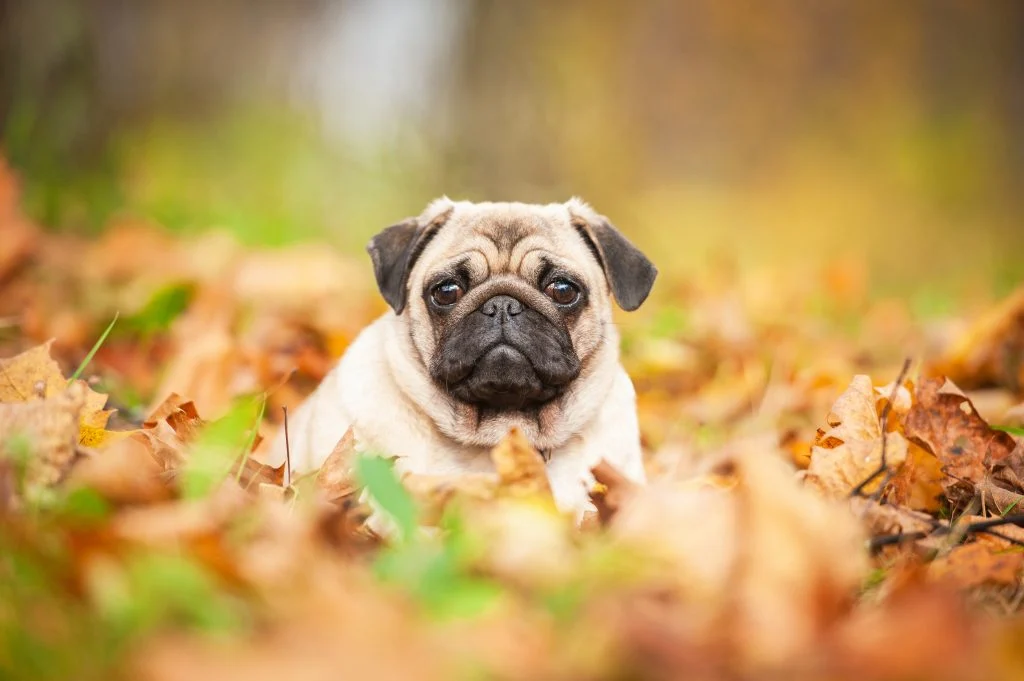Puggle
Quick Guide
What Exactly is a Puggle?
The Puggle is a mixed breed resulting from a cross between a purebred Pug and a purebred Beagle.
Some dog enthusiasts refer to the Puggle as a “designer dog” while others maintain that it is nothing more than a mixed breed, even a mutt.
Regardless of what the Puggle is called, it exhibits a combination of physical and personality traits from the two parent breeds.
Because genetics are so complex, it is impossible to predict exactly what the Puggle will be like. You can expect, however, your Puggle to fall somewhere between the Pug and the Beagle in terms of size, appearance, personality, and temperament.
The only way to know what your Puggle will really be like as an adult, however, is to wait for him to grow up.
Characteristics of a Pug
The Pug is one of the most easily identifiable dog breeds, known for its diminutive size, dark facial features, and wrinkled skin. This breed is also one of the oldest
dog breeds in existence. The origins of the Pug can be traced back to ancient China where the breed was particularly valued among Chinese Emperors. The exact origins of the breed are unknown but it is known that the breed was first exported from China to Europe during the 16th century. Throughout the 16th and 17th centuries, the Pug was popular among the European aristocracy and it didn’t take long for the breed to spread to other parts of the world. The Pug arrived in the United States during the 19th century and it was recognized by the AKC in 1885. The first American breed club wasn’t formed, however, until 1931.
Any Pug owner will tell you that the popularity of the breed among European royalty is well-founded. The Pug is one of the friendliest and gentlest breeds in existence and they are deeply devoted companions. Pugs are very small dogs, generally weighing between 14 and 18 pounds, but they are full of life and energy. These little dogs pack in a great deal of charm and they do very well around strangers, children, and other dogs and pets. The Pug might not be the best choice as a jobbing partner but if you are looking for a companion who will spend every waking moment in your company, the Pug is the way to go. These dogs are very people-oriented and extremely eager to please.
The Pug has a very small, compact body but it has very well-developed musculature. These dogs have smooth, glossy coats in various shades of fawn, apricot, silver, or black. Most Pugs have clearly defined, dark-colored facial markings on the eyes, muzzle, and ears with big brown eyes and button ears. The Pug’s skin is very loose and wrinkled on the face and neck while the tail is carried curled up over the hip. The short length of the Pug’s coat lends itself to low maintenance, though regular brushing and grooming is still recommended to keep it in good condition. Pugs do have double coats so they can withstand cooler weather, though their shortened faces makes them intolerant of heat and heavy exercise.
Pugs have a fairly long average lifespan between 12 and 14 years which suggests that it is a fairly healthy breed. Unfortunately, the Pug is prone to a wide variety of health problems, many of which are related to its size and structure. The Pug is one of many breeds that is prone to brachycephalic syndrome – this is characterized by short, pushed-in facial structure accompanied by pinched nostrils and an elongated soft palate. This condition renders the Pug intolerant of extreme heat and over-exercise – these problems can be compounded if the Pug is overweight or obese. Other health problems to which the Pug may be prone include Pug Dog Encephalitis (PDE), Legg-Calve-Perthes disease, patellar luxation, hip dysplasia, and dental problems. Pugs are also particularly prone to eye injuries and other eye problems.

Characteristics of a Beagle
The Beagle is an AKC-recognized breed belonging to the Hound Group. These are medium-sized hounds that look very similar in appearance to the Foxhound. The Beagle is a type of scent hound that was originally developed by hunters and breeders for the purpose of hunting hare. The exact origins of the Beagle breed are unknown, but dogs of similar size and function can be traced all the way back to Ancient Greece in the 5th century. It is commonly believed that the Talbot Hound is a predecessor of the modern Beagle and that it was likely crossed with Greyhounds at some point to increase their speed.
By the turn of the 18th century, two different hound breeds had been developed for hunting rabbit and hare – the Southern Hound and the North Country Beagle, also known as the Northern Hound. The Southern hound was very close in appearance to the Talbot hound, having a heavy build with a square head and long legs. The North Country Beagle (the product of the Talbot Hound and the Greyhound) was smaller and less heavyset – it was also faster than the Southern Hound but had less developed scenting abilities. When fox hunting overcame hare hunting in popularity, Beagle-type dogs were crossed with Stag Hounds to produce the modern Foxhound. From there, slightly smaller versions of the breed were developed into the modern Beagle.
In addition to being a skilled scent hound, the Beagle is also a highly intelligent and friendly breed. These dogs make excellent house pets due to their small size and even temperament – they are also a very healthy breed. Beagles have fairly compact bodies with short legs and a broad head. The ears are large and floppy while the eyes are large and brown. Beagles have medium-length, smooth coats that are fairly harsh in texture. The most common colors for the Beagle breed are black, brown and white with the tricolor combination being the most common coloration. Tricolor Beagles are typically born black and white but the black fades to brown in some areas as the puppies develop. Some Beagles continue to change color throughout the course of their lives.
In terms of temperament, the Beagle is a gentle and merry breed that typically enjoys the company of people and other dogs. Beagles can be a little aloof around strangers and they are ranked as one of the most excitable dog breeds which makes them good watch dogs, though they tend to warm up quickly. The Beagle is very smart but its breeding as a scent hound makes it very determined and often hard-headed – this makes them somewhat difficult to train. These dogs do get along well with children but they are pack animals so they do not do well when left alone for long periods of time. Beagles are not prone to many congenital health problems, though they can develop certain conditions like obesity, hypothyroidism, epilepsy, and various eye problems.
Puggle Characteristics and Temperament
Because the Puggle is a mixed-breed dog, it is difficult to predict what a puppy will be like when it grows up. Puggles inherit a combination of physical and personality traits from their parents but, because the parents come from two different breeds, it is impossible to tell which characteristics the dog will inherit from each. In reviewing the characteristics of the Pug and Beagle breeds, however, you can make certain assumptions about the Puggle breed as a whole. For example, you can expect your Puggle to remain fairly small because both parent breeds are small-breed dogs. For the most part, Puggles remain within the 15- to 30-pound range and they tend to top out around 15 inches in height.
In terms of shape, Puggles are fairly small and compact in body structure – they inherit their well-muscled appearance from both the Pug and the Beagle. Depending on genetics, the Puggle might have a slightly longer snout like the Beagle or more of a pushed-in face like the Pug. Most Puggles display some of the dark facial features characteristic of the Pug, though coat color and pattern is completely up for grabs. Puggles come in a wide range of colors and patterns including various combinations of black, brown, tan, and white, sometimes with spots or patches of color, other times in a solid color. The Puggle generally has flop ears, though the size and shape can vary greatly. Puggles also tend to have large, brown eyes and dark-colored noses.
In general, the Puggle is a friendly and spirited little dog, though temperament varies according to breeding and socialization. The Pug is a very laid-back breed that requires a great deal of attention from its owners while the Beagle is a little more independent and quite a pack animal. This being the case, your Puggle could be a very devoted companion, following you around the house, or he might prefer the company of other dogs. Though personality does vary, most Puggles do well with children and other dogs, though they may have a tendency to chase cats or other small pets. Some Puggles will be a little aloof around strangers and they may bark at intruders, though they are generally quick to make friends once they have been introduced.
The activity level of a Puggle will vary from low to moderate. Most Puggles are not overly active, though they do require plenty of exercise to maintain a healthy weight. Obesity is a big problem for both Pugs and Beagles and it can increase your dog’s risk for developing serious health problems. Crossing a brachycephalic breed like the Pug with a non-brachycephalic breed like the Beagle may lessen the risk for breathing problems, though you should still be careful with your Puggle in hot weather and avoid strenuous exercise. Other health problems to which the breed may be prone include eye problems, musculoskeletal issues related to the dog’s size, dental problems, and complications due to obesity.
How Much Do Puggles Cost?
When you start shopping around for a Puggle puppy you will probably find a wide range of prices for puppies. Some Puggle breeders market their puppies as “premium” or “designer dogs” and they price them accordingly, sometimes pricing them much higher than purebred puppies of either parent breed. If you are able to find a breeder who understands that a Puggle is a mixed breed, however, the cost will probably be much lower. You should avoid buying a Puggle puppy from a breeder who makes specific claims in regard to the puppy’s size, appearance, or temperament because these things are nearly impossible to predict with a mixed-breed dog.
In order to determine whether the price for a Puggle puppy is fair you need to think about it in comparison to the cost of a purebred Pug or a purebred Beagle. A purebred Pug from an AKC-registered breeder sells for between $800 and $1,200, though show-quality Pugs with careful breeding can fetch prices up to $2,000. If you purchase a purebred Beagle from a responsible breeder, you can expect to pay somewhere between $500 and $800. For a mixed breed puppy like the Puggle you should avoid paying more than $800, though a price range between $300 and $600 is more reasonable.
What is a Puggle’s Lifespan?
The Puggle is a cross between two pure breeds, the Pug and the Beagle. In order to determine your Puggle’s life expectancy, you need to consider the lifespan of these two parent breeds. Both parent breeds for the Puggle are small-breed dogs so they have fairly long lifespans compared to larger breeds. The average lifespan for the Pug is 12 to 14 years while the average for the Beagle is 13 to 16 years. Given this information, you can expect your Puggle to live somewhere between 12 and 14 years.
How Big is a Full-Grown Puggle?
It is difficult to predict the adult size of a mixed-breed dog like the Puggle because the genetics are so complex and variable. In the case of the Puggle, both of the parent breeds are smaller dogs so you can expect the Puggle to remain fairly small. A Pug generally weighs between 14 and 18 pounds at maturity while an adult Beagle weighs 20 to 35 pounds. Given this information, you can expect your Puggle to fall somewhere in the weight range between 15 and 30 pounds when he is full-grown. The only way to really know the full size of your Puggle, however, is to wait for him to mature.













Love my dog… Hunter is a boy puggle and have had him 7 years and he just turned 8 this past June. I just wanted to comment on this article…found it very interesting as well as helpful in explaining the breeds that made this particular hybrid or mix. I never knew the history of the beagle & how it was breed by 2 breeds and it makes a lot of sense because Hunter is what I would say a perfect mix of all of his original ancestors meaning he got alot of the pugs qualities when it comes to being a best companion and he does not like to be left alone. I am not sure which one you said may be a little harder to train lol but he loves all people all other dogs, kids, babies and cats…yes at first he was a little rough with cats but he then learned they had claws lol and then he almost acted just like he was one of them haha. They certainly have great, almost people like personalities and he is extremely intelligent. Whats great about this article is how it explains one of the hounds that made the beagle had longer legs and the other one has the long floppy ears and then he really only has the mask, tail as well as fawn hair like a pug don’t think it was mentioned where the white chest came from but that’s what Hunter has with little white on his paws. Great companions and great house pets and my dog is still hyper so hopedully he lives a long live.